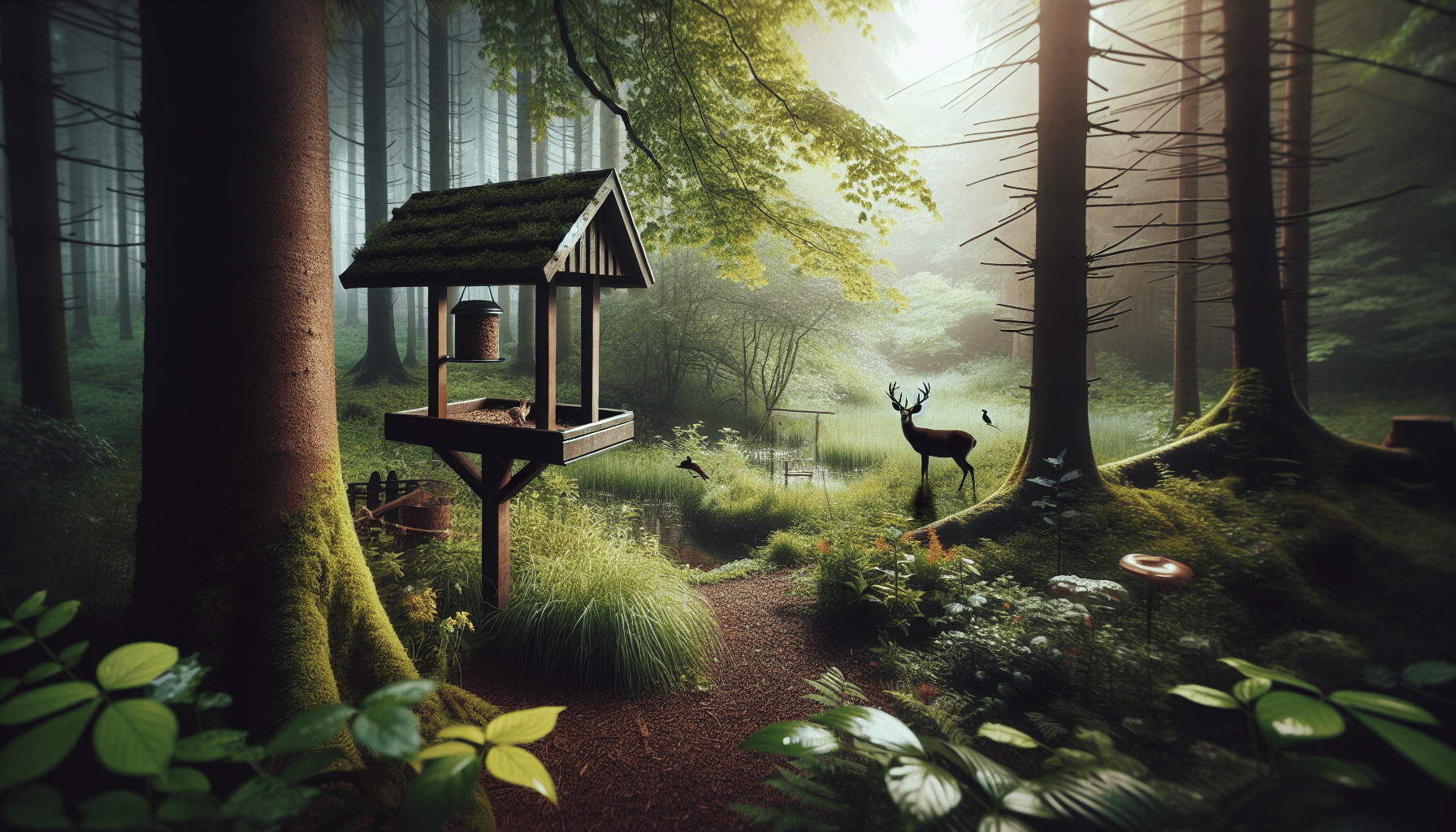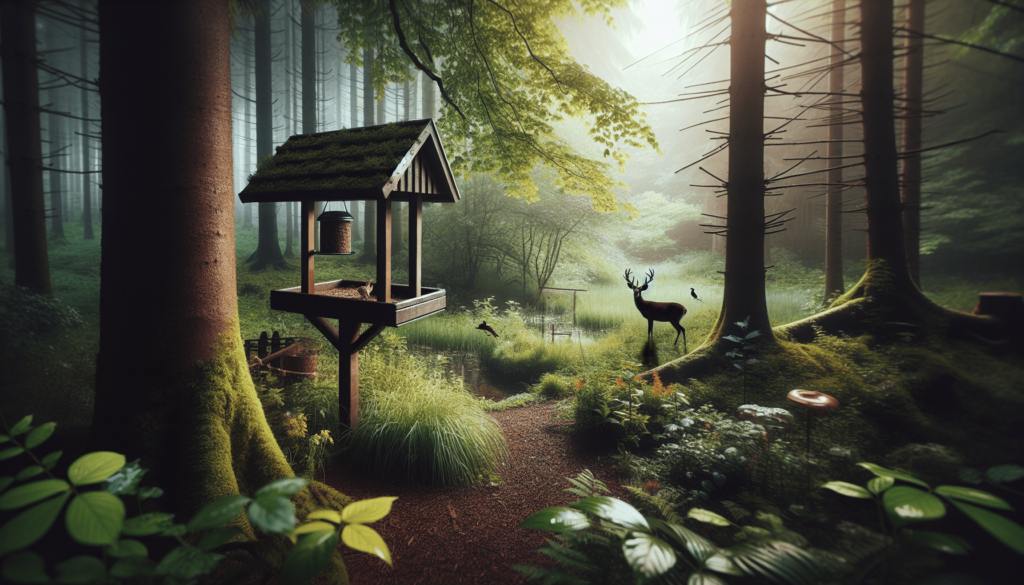
What happens when one activity meant to help wildlife ends up affecting the ecosystem in unexpected ways?

The Purpose of Deer Feeders
Deer feeders are commonly used to support local deer populations, particularly during harsh winters when food sources are scarce. These feeders are designed to provide a reliable source of nutrition, which can be crucial for the health and survival of deer. However, while your intention may be to assist these graceful creatures, it’s essential to understand how deer feeders can impact not only the deer but also the surrounding environment.
Feeding Deer: A Double-Edged Sword
You might think that providing supplemental food is a straightforward way to help wildlife, but this act can have unforeseen consequences. For example, deer feeders can alter natural foraging behavior and create dependency on human-supplied food. When deer start relying on feeders, they may neglect to forage naturally, which can lead to a decrease in their inherent foraging skills over time.
The Attraction of Deer Feeders
It’s hard to resist the sight of deer gathering around a feeder; this scene might be charming and rewarding for you as an observer. Deer feeders can attract local deer populations, showcasing their beauty and allowing for closer wildlife encounters. However, this attraction can come with a hefty ecological price tag, leading to problems such as overpopulation in certain areas due to an artificial food supply.
Ecological Effects on Deer Populations
Understanding how deer feeders influence local deer populations involves examining both the direct and indirect effects.
Population Density Changes
When you think about deer feeders, one immediate impact is the potential for increased population density in areas where feeders are placed. Higher densities can lead to overbrowsing of vegetation, resulting in habitat degradation. Overbrowsing occurs when deer consume more vegetation than is sustainable, affecting entire ecosystems.
Disease Transmission Risks
Another concern lies in the possibility of disease transmission among deer populations. Feeding deer can promote closer contact between individuals, increasing the risk of spreading diseases like Chronic Wasting Disease (CWD). When deer congregate around feeders, they may share pathogens more readily than if they were spread out in their natural habitat.
Effects on Other Wildlife
It’s not just the deer that experience changes due to supplemental feeding. Other wildlife species are also affected when you introduce deer feeders into an ecosystem.
Competition and Predation
One significant impact is that of competition for food resources. When deer draw in larger populations due to feeders, they may outcompete smaller animals for available food. This can potentially lead to declines in other herbivorous species, changing local biodiversity patterns.
On the flip side, an influx of deer could also attract predators such as coyotes or mountain lions that feed on them. The presence of these predators can create a new dynamic within the ecosystem, which might not be beneficial for all species involved.
Stress on Vegetation
When deer congregate around feeders, they often over-consume local vegetation, particularly saplings and young trees. This behavior can significantly hinder forest regeneration and biodiversity. You might observe changes in plant community structures over time, as certain species may become less prevalent due to the browsing pressure exerted by deer drawn to feeders.
Environmental Consequences
Caring for wildlife often means considering the environment as a whole.
Soil Erosion and Nutrient Depletion
Increased deer activity around feeders can lead to soil erosion. When deer intensively graze in particular areas, it can destabilize the soil, making it prone to erosion. This erosion can degrade the land’s overall health and may lead to nutrient depletion.
Disruption of Ecological Processes
Deer feeders can also disrupt natural ecological processes, such as seed dispersal. When deer feed primarily in one location due to supplemental feeding, the seeds from their droppings may not be spread as widely as they would be if deer were foraging more broadly. This change can affect plant diversity, leading to a less varied ecosystem over time.

Ethical Considerations
As you consider placing a deer feeder, it’s essential to think about the ethical implications.
Dependence vs. Self-Sufficiency
Promoting dependency on supplemental food goes against natural wildlife management philosophy. While you may have the best intentions, providing feeders can hinder the natural resilience of wildlife populations. These animals need to be capable of navigating their habitats without human assistance.
Hunting Practices
Additionally, the introduction of deer feeders can affect local hunting practices. Hunters may find it easier to locate deer that frequent feeders, leading to changes in hunting pressure and potentially impacting deer population dynamics. This situation raises questions about fair chase ethics within the hunting community, as the dynamic between hunters and wildlife can shift dramatically.
Sustainable Alternatives
If you’re drawn to the idea of aiding local deer populations, there are sustainable alternatives worth considering.
Native Plant Landscaping
Instead of using feeders, you might explore landscaping with native plants that naturally support deer and other wildlife. Such plants can provide nutrition while maintaining a balanced ecosystem. Native species tend to require less water and care, making them more suitable for local environments.
Habitat Improvement Projects
You can participate in or support habitat improvement projects aimed at enhancing the natural environment for deer and other wildlife. These projects can include controlled burns, reforestation efforts, or the removal of invasive species—steps that sustain healthy ecosystems without creating dependency.
Making Informed Decisions
It’s crucial to gather as much information as possible when contemplating the introduction of deer feeders into your environment.
Consulting Wildlife Experts
Consider reaching out to local wildlife agencies, conservation groups, or ecologists to understand the implications of placing feeders in your area. These professionals can provide insight into local deer population dynamics, the presence of diseases, and the ecological ramifications.
Monitoring and Evaluation
If you do choose to use deer feeders, implementing a monitoring plan can help you assess the impacts over time. This step may involve observing deer populations, documenting vegetation changes, and noting any shifts in other wildlife dynamics.
Conclusion: Finding Balance
As you navigate the complexities of wildlife management, remember that the goal is to create a balance between supporting deer populations and maintaining ecological integrity.
By weighing the ecological impacts of deer feeders against the benefits, you can make choices that contribute positively to both wildlife and the environment. Ultimately, fostering a sustainable approach will ensure that future generations can continue to appreciate the beauty of deer in their natural habitats, without compromising the ecosystems they rely on.
Keeping our ecosystems in mind, you can play a vital role in the delicate balance between wildlife and their environments. Your decisions can spark positive change, and with a little thoughtfulness, everyone—from deer to other wildlife and even the landscapes—can thrive.





